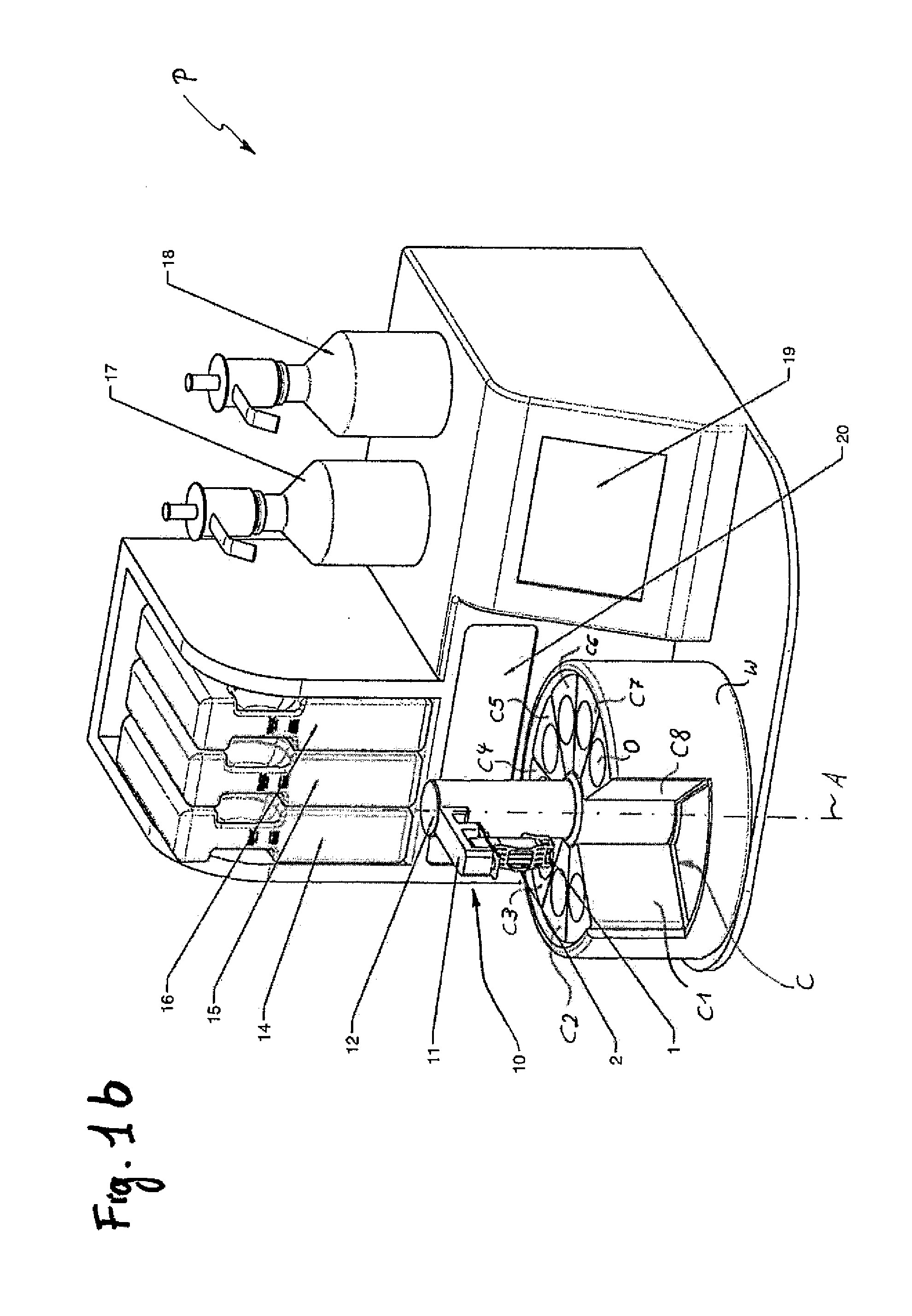Method, Processor and Carrier for Processing Frozen Slices of Tissue of Biospecimens
a biospecimen and frozen section technology, applied in the field of methods and processors for processing frozen sections of biospecimens, can solve the problems of difficult identification of individual cell types, correspondingly difficult, and difficulty in documenting the process, so as to improve the quality of frozen sections
- Summary
- Abstract
- Description
- Claims
- Application Information
AI Technical Summary
Benefits of technology
Problems solved by technology
Method used
Image
Examples
Embodiment Construction
[0057]FIGS. 1a and 1b show a processor P for processing frozen slices of tissue of a biospecimen according to the invention. The processor P preferably is a semi-automatic or full-automatic processor, as will be described in the following.
[0058]The processor P comprises at least three, preferably at least five containers C. The processor preferably comprises one container C for each processing step being described in the following, i.e. preferably three to ten containers C, more preferred eight containers C1 to C8 (see FIG. 1b). The containers C can be arranged in a row, in a matrix-like arrangement (checkerboard pattern) or the like. According to a preferred embodiment, the containers C are distributed over the circumference of a circle and around a vertical axis A as shown in FIG. 1b.
[0059]The containers C can, for instance, be formed as single elements (e.g. having a circle sector shape in a top view thereof; see FIG. 1b) being arranged in a predefined order (e.g. in a (partiall...
PUM
| Property | Measurement | Unit |
|---|---|---|
| thickness | aaaaa | aaaaa |
| thickness | aaaaa | aaaaa |
| thickness | aaaaa | aaaaa |
Abstract
Description
Claims
Application Information
 Login to View More
Login to View More - R&D
- Intellectual Property
- Life Sciences
- Materials
- Tech Scout
- Unparalleled Data Quality
- Higher Quality Content
- 60% Fewer Hallucinations
Browse by: Latest US Patents, China's latest patents, Technical Efficacy Thesaurus, Application Domain, Technology Topic, Popular Technical Reports.
© 2025 PatSnap. All rights reserved.Legal|Privacy policy|Modern Slavery Act Transparency Statement|Sitemap|About US| Contact US: help@patsnap.com



